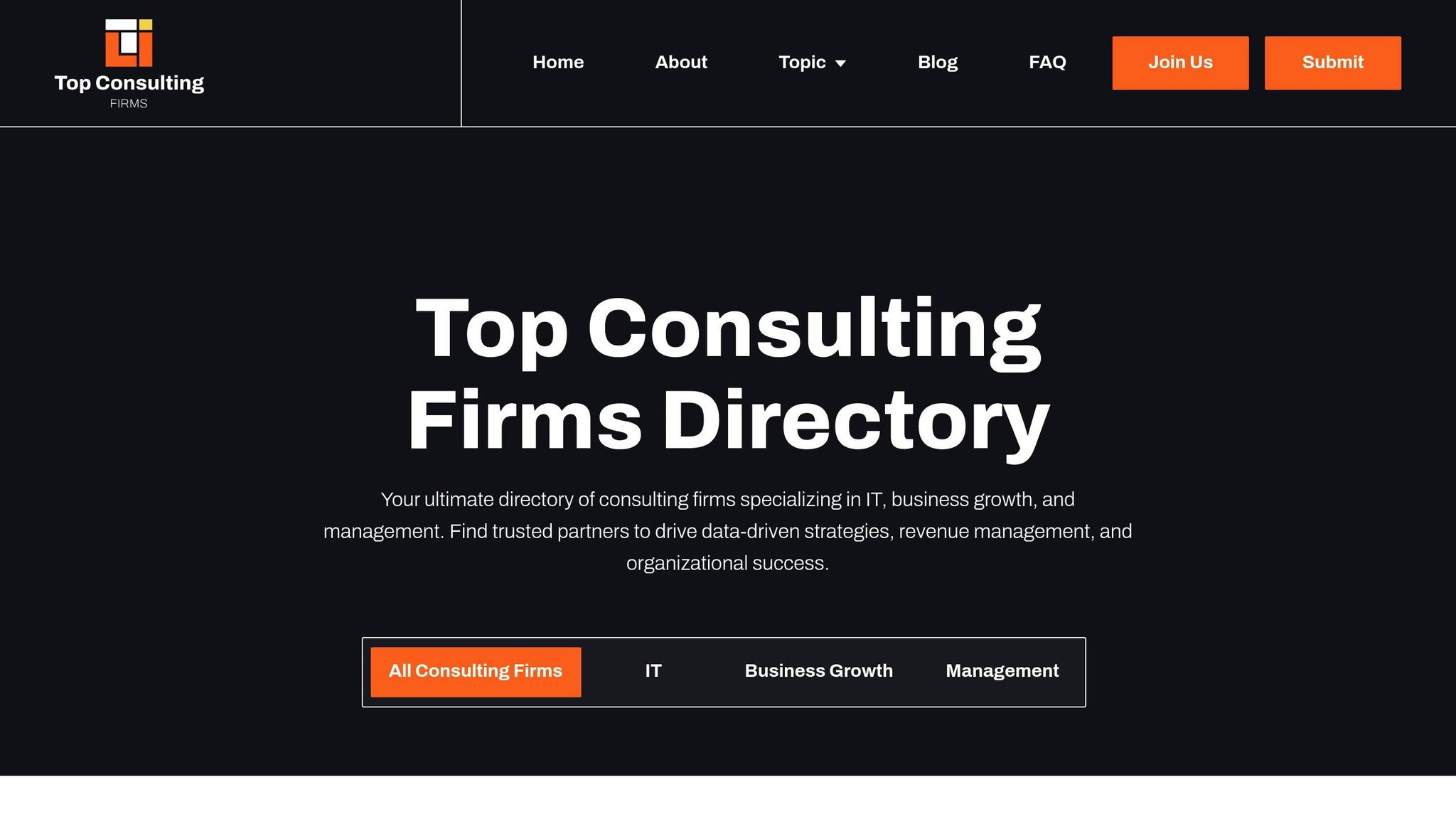Operational metrics and KPIs are essential for tracking business performance and achieving goals. Metrics provide data on various activities, while KPIs focus on the most critical objectives tied to success. Understanding the difference between these tools is key to making informed decisions, improving processes, and driving results.
Key Takeaways:
- Operational Metrics: Measure day-to-day activities across departments (e.g., inventory turnover, defect rate).
- KPIs: Focused on strategic goals (e.g., customer acquisition cost, net profit margin).
- Good KPIs: Must be specific, measurable, relevant, and time-bound.
- SMART Framework: Helps design effective KPIs by ensuring clarity, achievability, and alignment with goals.
- Department-Specific KPIs: Tailored metrics for finance, operations, sales, and HR ensure each team tracks what matters most.
Effective metrics and KPIs require proper implementation, clear ownership, and regular reviews to stay aligned with business priorities. Tools like dashboards simplify tracking, while consulting experts can refine and optimize systems for better results.
What Are Operational Metrics? - BusinessGuide360.com
What Makes Metrics and KPIs Effective
Not all metrics and KPIs are created equal. The difference between those that provide meaningful insights and those that generate noise can make or break your ability to achieve your business goals. To get the most out of your KPIs, it’s essential to know what makes them effective and how to align them with your strategic objectives.
Key Attributes of Good KPIs
For KPIs to truly drive results, they must share certain critical attributes that go beyond just tracking data.
Relevance to business objectives is the cornerstone of any effective KPI. Every indicator you track should directly tie to what your organization aims to achieve. If it doesn’t, it’s simply wasting time and resources.
Measurability is another must-have. KPIs should rely on reliable, quantifiable data that can be consistently tracked. Whether you’re monitoring revenue in dollars, customer satisfaction on a 1-10 scale, or processing time in minutes, the data must be concrete and comparable over time.
Clarity and simplicity ensure that KPIs are easy to understand for everyone involved. A good KPI doesn’t require a lengthy explanation - it should be straightforward enough to encourage ownership and action.
Actionability is what separates meaningful KPIs from mere data points. Effective KPIs should signal what needs to be done when performance falls short. They should guide your team toward specific, corrective actions.
Timeliness is critical for responding effectively. Some KPIs need daily updates, while others may be better suited for monthly or quarterly reviews. The key is aligning the frequency of updates with your ability to act on the information.
Benchmarking capability adds context to your data. Whether comparing against industry standards or your own historical performance, this attribute helps you understand whether your results are strong, weak, or somewhere in between.
The SMART Criteria for KPI Design
These attributes serve as the foundation for the SMART framework, a widely used approach to designing effective KPIs. This method helps avoid common pitfalls and ensures your performance indicators deliver real value.
Specific KPIs eliminate vagueness by clearly defining what’s being measured. For example, instead of tracking "customer satisfaction", you might measure the "average post-purchase satisfaction score." The more precise the KPI, the easier it is to measure consistently over time.
Measurable KPIs use concrete numbers to answer questions like "how much", "how many", or "what percentage." This ties back to the importance of reliable data.
Achievable KPIs strike a balance between ambition and realism. Setting overly ambitious targets can demotivate your team, while realistic goals encourage progress and improvement within the limits of your resources and market conditions.
Relevant KPIs ensure alignment with your overall business strategy. Even if a KPI is measurable and achievable, it’s not worth tracking unless it supports your key objectives. This keeps your focus on what truly matters.
Time-bound KPIs include clear deadlines and review periods. Whether tracking daily, weekly, or quarterly progress, defined timeframes create a sense of urgency and allow for regular evaluation.
Here’s an example of the SMART framework in action: A software company might set a KPI to "increase monthly recurring revenue from existing customers by 15% within six months through upselling and cross-selling initiatives." This KPI is specific (focused on existing customer revenue), measurable (15% increase), achievable (based on past results and market conditions), relevant (aligned with growth goals), and time-bound (six-month timeline).
Types of Operational Metrics and KPIs by Department
Every department within a business has its own set of key performance indicators (KPIs) that help track progress and drive results. Knowing which metrics matter most for each function ensures you're measuring what truly impacts performance.
Finance KPIs
Finance KPIs provide a clear picture of a company's financial health and stability. These metrics guide decisions on investments, cost control, and growth.
- Revenue growth rate: This measures how revenue changes over time, often expressed as a percentage. Subscription-based businesses may focus on monthly recurring revenue (MRR), while annual revenue growth offers a broader perspective on overall performance.
- Gross profit margin: This shows how efficiently a company converts sales into profit before accounting for overhead. It's calculated as (Revenue – COGS) ÷ Revenue. Healthy margins vary by industry but reflect good pricing and operational practices.
- Cash conversion cycle: This metric combines days sales outstanding, days inventory outstanding, and days payable outstanding to measure how quickly a business turns investments in inventory into cash. A shorter cycle means smoother cash flow.
- Return on investment (ROI): ROI gauges the profitability of investments or initiatives. It's calculated by dividing net profit by the total investment and multiplying by 100. This is key for comparing opportunities and tracking management performance.
- Accounts receivable turnover: This measures how effectively a company collects payments. A higher turnover rate indicates faster collections, which is especially important during economic downturns when delayed payments can strain cash flow.
Now, let's shift focus to metrics that enhance operational and distribution efficiency.
Operations and Distribution KPIs
Operational KPIs are designed to improve efficiency, quality, and customer satisfaction in production and delivery processes. These metrics help identify issues, reduce waste, and streamline operations.
- On-time delivery rate: This measures the percentage of orders delivered on schedule. A high rate (typically 95% or above) is crucial for maintaining customer satisfaction.
- Defect rate: This tracks the percentage of products or services that fail to meet quality standards. Lower defect rates reduce costs and protect your brand. For example, manufacturers often aim for defect rates below 1%.
- Capacity utilization: This shows how effectively resources like equipment, space, or time are being used. It's calculated as actual output ÷ maximum possible output. Optimal rates usually range between 80-85%, balancing efficiency with flexibility.
- Order fulfillment cycle time: This measures how long it takes to process and deliver an order. Shorter times improve customer satisfaction. E-commerce businesses often track this in hours, while B2B companies may measure it in weeks.
- Inventory turnover: This indicates how quickly inventory is sold and replaced. High turnover suggests efficient inventory management and strong demand, while low turnover may signal overstock or weak sales.
Next, we'll look at KPIs that drive sales, marketing, and customer acquisition.
Sales and Marketing KPIs
Sales and marketing KPIs help evaluate how effectively a business is acquiring customers, generating revenue, and retaining clients. These metrics guide resource allocation and strategy adjustments.
- Customer acquisition cost (CAC): This calculates the total cost of acquiring a new customer by dividing marketing and sales expenses by the number of new customers gained.
- Customer lifetime value (CLV): CLV estimates the total revenue a customer generates over their relationship with your business. Comparing CLV to CAC ensures you're investing wisely in customer acquisition. A common goal is a CLV-to-CAC ratio of 3:1 or higher.
- Conversion rate: This tracks the percentage of prospects who take a desired action, such as making a purchase. Monitoring conversion rates across sales funnel stages can uncover areas for improvement.
- Average deal size: This measures the typical value of a sale or contract. Tracking this helps forecast revenue and spot trends in customer behavior.
- Sales cycle length: This tracks the average time it takes to close a deal, from initial contact to final agreement. Shorter cycles reflect more efficient sales processes.
- Marketing qualified leads (MQLs): These are leads that meet criteria indicating they're ready for sales engagement. This metric aligns sales and marketing teams while providing insight into campaign success.
Finally, let’s explore the KPIs that reflect workforce performance and organizational health.
Human Resources KPIs
HR metrics focus on workforce efficiency, satisfaction, and overall organizational well-being. These KPIs are essential for managing talent and supporting growth.
- Employee turnover rate: This measures the percentage of employees who leave during a specific period. High turnover can indicate workplace issues and lead to higher recruitment and training costs. Many aim for rates below 15%, though this varies by industry.
- Time to fill: This tracks the average time it takes to hire for an open position. Shorter times reduce the impact of vacancies on productivity, especially for critical roles.
- Employee satisfaction score: Regular surveys gauge employee happiness and engagement. Higher scores often correlate with better performance and lower turnover.
- Absenteeism rate: This measures the percentage of scheduled work time lost due to absences. High rates can signal workplace problems or low engagement.
- Training completion rate: This tracks the percentage of employees who complete training programs on time. It’s a good indicator of a company’s learning culture and compliance with skill development requirements.
- Revenue per employee: This productivity metric divides total revenue by the number of full-time employees. Higher figures suggest efficient processes and better resource use.
With these KPIs, each department can focus on what drives success in their area, contributing to the overall growth and efficiency of the business.
sbb-itb-97f6a47
How to Implement and Use Metrics and KPIs
Putting operational metrics and KPIs into action takes more than just picking numbers to track. It’s about creating a system that aligns with your goals, delivers actionable insights, and adapts as your business evolves.
Steps to Select and Implement KPIs
The first step is to tie your metrics directly to your strategic goals. Instead of tracking everything, focus on what drives your business forward. Identify your top 3–5 priorities for the next year. For example, if boosting customer retention is key, prioritize metrics like customer churn rate or net promoter score over general revenue figures.
Assign clear ownership and accountability for each KPI. Each metric should have a dedicated person or team responsible for tracking, analyzing, and acting on the data. For instance, if customer acquisition cost is a critical metric, your marketing manager could take charge, reviewing it weekly and making adjustments if costs exceed targets.
Next, establish a baseline by gathering three months of historical data, or start tracking immediately to measure progress. Be sure to document how each KPI is calculated to ensure consistency over time.
When setting goals, aim for realistic and tiered targets. Define three levels: minimum acceptable performance, target performance, and stretch goals. For example, if your current customer satisfaction score is 7.2 out of 10, you could set 7.5 as the minimum, 8.0 as the target, and 8.5 as the stretch goal.
Decide on the reporting frequency based on the nature of the metric. Operational metrics like website uptime might need daily tracking, while broader goals like employee satisfaction or market share are better suited for monthly or quarterly updates. Financial KPIs often align with monthly reporting cycles to match accounting timelines.
Once your KPIs are defined, integrate them into reporting tools that allow for continuous monitoring and analysis.
Using Dashboards and Tools for Real-Time Tracking
Dashboards are a powerful way to make KPI data accessible and actionable. The best dashboards offer a clear, visual summary of performance, using tools like color coding and trend arrows to highlight progress. Green typically means goals are being met, yellow signals caution, and red indicates immediate attention is needed.
Choose the right visualization for each dataset. Line charts are great for tracking trends over time, bar charts work well for comparisons, and gauge charts show progress toward specific targets. Keep each dashboard focused, limiting it to 5–7 key metrics to avoid overwhelming users.
Whenever possible, automate data collection. Many modern tools can pull data directly from your systems, eliminating manual updates and ensuring real-time accuracy. This automation is especially useful for metrics that require quick responses, like inventory levels or customer support ticket resolution times.
Tailor your dashboard’s access levels to fit the needs of different stakeholders. Executives might only need a high-level overview, while department managers may require detailed insights into their specific areas. Front-line employees should see metrics they can directly impact through their daily tasks.
Finally, ensure your dashboards are mobile-friendly. Managers often need to check performance on the go, so tools that work seamlessly on smartphones and tablets are a must.
Reviewing and Adjusting KPIs Over Time
Once your KPIs are in place, they need regular evaluation to stay relevant and effective.
Plan quarterly reviews to assess whether your KPIs align with current business priorities and if targets need adjusting. These reviews allow you to spot trends and make necessary changes before issues arise.
Look for correlations between metrics to identify leading indicators. While lagging indicators confirm past performance, leading indicators can help you predict and shape future outcomes. For instance, website traffic and lead generation often signal upcoming sales revenue. Understanding these relationships allows for proactive decision-making rather than reactive responses.
Don’t hesitate to retire outdated metrics. If a metric hasn’t influenced a decision in six months, it might be time to stop tracking it. Keeping too many irrelevant metrics creates unnecessary noise and distracts from what truly matters.
Document any changes to KPIs or targets, including the reasons behind them and the expected outcomes. This helps maintain institutional knowledge and ensures future teams understand the evolution of your measurement strategy.
When considering new metrics, test them on a small scale before rolling them out across your entire organization. A pilot program can help confirm the metric’s usefulness and ensure the data collection process is smooth and reliable.
The success of KPIs lies in treating them as part of an ongoing process. By regularly refining your approach, you can stay aligned with your goals and remain agile in the face of changing business conditions.
Getting Expert Help with KPI Optimization
Once you've set up the basics of your KPI system, taking it to the next level often calls for expert input. While internal teams can establish foundational metrics, consulting professionals bring the expertise needed to refine KPIs into tools that actively drive strategic decisions and improve overall performance.
How Consulting Firms Enhance KPI Systems
Consulting firms follow a structured approach to KPI development, often using frameworks like the MPRA methodology. This ensures that the metrics align with your strategic goals and deliver actionable insights.
The process typically starts with defining your strategy. Consultants work with businesses to clearly establish a shared vision and set realistic goals before diving into metrics. This step is crucial to avoid tracking numbers that might seem impressive at first glance but don’t actually guide decision-making.
One of the key benefits of hiring consultants is their ability to identify performance measures that genuinely reflect progress. Instead of defaulting to industry benchmarks or internal guesses, they focus on actionable indicators that can drive real improvements.
Consultants also excel at fostering organizational support for new KPI systems. Through workshops and collaborative sessions, they ensure that staff and stakeholders understand and embrace the metrics. Without this buy-in, even the best-designed system is unlikely to succeed.
Implementation is another area where consultants shine. They help set up clear processes for data collection, assign accountability for each metric, and design reports and dashboards that make interpreting the data straightforward across all teams.
The MPRA framework also emphasizes flexibility, allowing businesses to adjust metrics as strategies and market conditions evolve. This adaptability ensures that KPIs remain relevant and aligned with long-term goals, supporting ongoing improvement.
Consulting firms typically offer services tailored to different needs. For businesses starting from scratch, some firms provide comprehensive programs that include free introductory sessions to kick-start the KPI development process. Companies with existing systems can benefit from services aimed at refining and improving their current metrics. Additionally, specialized training programs and assessments, such as those using the Strategic Management Maturity Model (SMMM), help businesses deepen their performance measurement expertise.
Ultimately, the goal is to move beyond simply tracking metrics to creating systems that actively drive transformation and help businesses achieve their performance objectives.
Using the Top Consulting Firms Directory

Finding the right consulting partner can be simplified with targeted resources like the Top Consulting Firms Directory. This directory connects businesses with leading consultants who specialize in performance measurement and business optimization.
The directory includes curated listings of firms with expertise in key areas, such as data analytics, strategic management, cloud services, digital transformation, and more. This focus saves time compared to searching through generic business directories.
What makes this directory particularly useful is its emphasis on specialized capabilities. The listed firms offer expertise in areas like IT infrastructure, cybersecurity, revenue growth, customer acquisition, and organizational change management. This ensures you can find consultants who not only understand the technical side of KPI development but also its strategic implications.
For businesses with complex, multi-departmental KPI projects, the directory is especially helpful. Many of the featured firms have experience implementing enterprise-level systems across finance, operations, sales, marketing, and HR. This expertise is invaluable when creating integrated dashboards and ensuring alignment across all departments.
Additionally, companies undergoing digital transformation will find firms that specialize in both technology implementation and change management. Some firms also offer financial advisory and risk management services, which are critical when aligning KPIs with investor expectations or regulatory requirements.
Conclusion
Operational metrics and KPIs are the backbone of smart business management, turning raw data into meaningful insights that guide strategic decisions. Throughout this guide, we’ve explored how these tools help organizations measure performance, uncover areas for improvement, and unite teams around shared goals.
But not all metrics are created equal. The ones that truly make a difference are specific, measurable, and aligned with business objectives. Whether you’re tracking performance in finance, operations, or sales, well-chosen KPIs simplify complex data and provide a clear sense of direction in today’s fast-paced business landscape.
The real challenge lies in implementation. Gathering data is only the first step - you also need reliable systems to track, analyze, and act on it. Tools like modern dashboards and real-time reporting make monitoring easier, but success requires thoughtful planning, clear accountability, and ongoing refinement.
Using the SMART framework is an excellent starting point for building effective KPIs. However, as your business grows and the market shifts, your metrics need to evolve too. Regularly reviewing and adjusting your KPIs ensures they stay relevant and continue to drive meaningful progress.
For businesses looking to fine-tune their KPI systems, seeking professional expertise can be a game-changer. Consulting firms bring structured approaches that align metrics with strategic goals, ensuring you get actionable insights - not just numbers that look good on a report.
If you’re ready to take your KPI strategy to the next level, expert input can make all the difference. The Top Consulting Firms Directory is a great resource for finding specialists in areas like performance measurement, data analytics, IT infrastructure, and organizational change. By partnering with the right experts, you can combine their knowledge with your goals to create a system that delivers real, measurable results.
FAQs
How can I make sure my KPIs align with my business's strategic goals?
To connect your KPIs with your business's strategic goals, start by pinpointing your main objectives. These might include increasing revenue, improving customer satisfaction, or making operations more efficient. Once you've clarified these goals, select KPIs that directly track your progress toward achieving them. Make sure each KPI adheres to the SMART framework - Specific, Measurable, Achievable, Relevant, and Time-bound.
Stick to a small number of essential metrics, ideally between 3 and 5. This keeps your team focused and prevents them from feeling overwhelmed. As your business grows and changes, regularly revisit and adjust your KPIs to ensure they remain aligned with your evolving goals. This ongoing adjustment ensures your team stays focused on what matters most and continues moving toward success.
What mistakes should I avoid when setting up a new KPI system for my business?
When setting up a new KPI system, there are a few common mistakes you’ll want to steer clear of to ensure it works as intended. One big misstep is choosing KPIs that don’t align with your strategic goals. When that happens, teams can end up chasing metrics that don’t contribute to what really matters. Another frequent error is cramming the system with too many KPIs, which can overwhelm teams and make it tough to focus on what’s truly important.
On top of that, skipping input from key stakeholders or failing to get management on board can lead to poor adoption and roadblocks during implementation. To get it right, make sure your KPIs are directly tied to your business objectives, keep the metrics straightforward and actionable, and involve your team at every stage. This way, you’ll create a system that not only delivers meaningful results but also encourages accountability across the board.
How often should I review and update my KPIs to keep them relevant?
To keep your KPIs working effectively, it's wise to review them on a monthly or at least quarterly basis. If you're in an industry where things change quickly, you might even need to take a look weekly. Frequent reviews help you stay in sync with evolving business goals and market dynamics, making sure your KPIs continue to deliver useful insights.
During these reviews, ask yourself: Do your KPIs still match your objectives? Are they keeping up with the latest market trends? Do they offer insights you can act on? If the answer to any of these questions is "no", it's time to tweak them to stay relevant and impactful.


